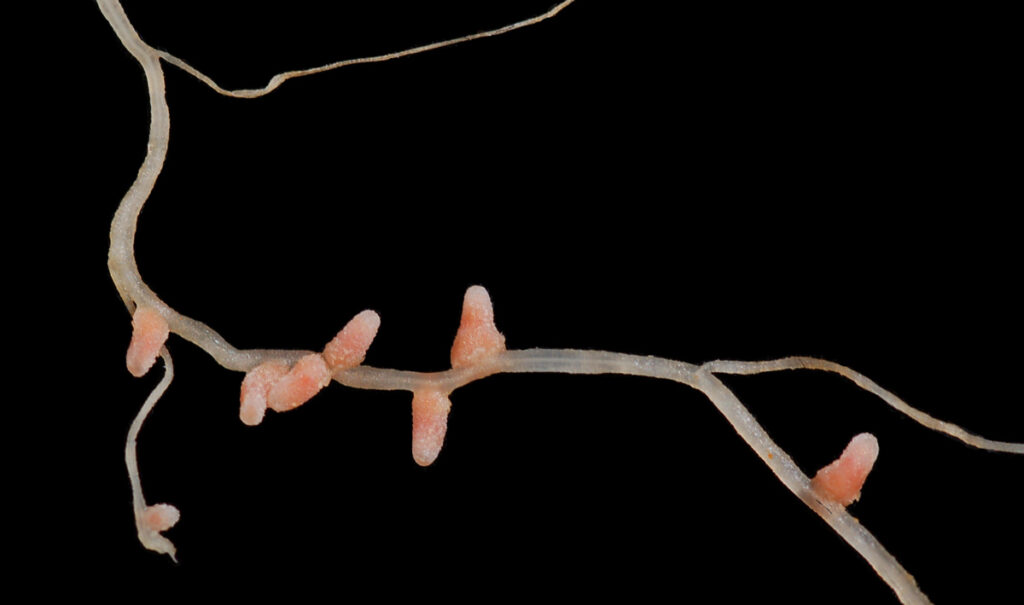From vast corn fields to small rice plots, the way we grow our food and nourish our communities will increasingly bear the brunt of climate change.
Rising temperatures and more extreme weather are exacerbating inequalities in global food systems. More than enough food is already produced to feed the global population, but roughly 783 million people worldwide currently experience hunger as a result of systemic inequalities related to gender, geography, conflict, and resources. Warming of 2°C will drive an estimated 189 million additional people into hunger.
And yet global food production systems are stuck in a vicious cycle that threatens both food security and environmental health.
The synthetic fertilizer supply chain is contributing to the very changes in climate that are acutely harming food production worldwide.
Farmers in predominantly high-income countries (and elsewhere, when possible) apply vast amounts of inorganic fertilizers to their fields to ensure high yields. Perversely, however, the synthetic fertilizer supply chain is contributing to the very changes in climate that are acutely harming food production worldwide. For example, synthetic fertilizer application and livestock production together are responsible for up to 70% of emissions of nitrous oxide—a greenhouse gas that is almost 300 times more potent than carbon dioxide.
Thankfully, nature offers a solution that is of increasing interest to scientists. This solution—crop-fertilizing soil microbes—could help to break the cycle of synthetic fertilizer use and its attendant environmental impacts and usher in more sustainable food production systems.
Tracing the Evolution of Beneficial Microbes
When plants first appeared on land roughly 460 million years ago, these intrepid explorers developed new strategies to source the critical nutrients required for life from the terrestrial environment.
One solution these plants developed involved beneficial relationships with soilborne arbuscular mycorrhizal fungi. Ancient plants were rootless, but the connection established with these filamentous fungi allowed them to access water and vital nutrients such as nitrates, phosphates, and micronutrients from the soil. In return, plants provided the fungi with energy harvested through photosynthesis that was otherwise unavailable to these microbes. These fungi continued to provide the same benefits to root-bearing plants once they evolved.
Later, about 100 million years ago, some plants, including beans, peas, and lentils—what we know as the legume family of plants—used the same blueprint and developed a similar symbiotic relationship with certain types of soil bacteria. These bacteria, known as rhizobia, would infect the roots of legume plants and then use an enzyme to break down and fix abundant atmospheric nitrogen into accessible nutrients for the plant, supporting its continuous growth.

Today, scientists addressing the challenges threatening global food systems hope that by retracing past plants’ evolutionary steps, they can leverage these natural processes to reduce costly overreliance on inorganic fertilizers and support more sustainable production of the world’s staple crops.
Scientists can reactivate or augment plants’ biological ability to source nutrients naturally from their environment, potentially reducing the existing dependence on applied fertilizers.
A major area of advancement includes research into plant perception mechanisms for mycorrhizal fungi and rhizobia, which has allowed scientists to make strides in understanding how legumes “decide” to engage with these beneficial bacteria. For example, we now know the molecular mechanisms—involving various signals, genes, and proteins—that integrate plant nutrient status and symbiotic “willingness.” Typically, legumes and other plants will “turn off” their ability to connect symbiotically with beneficial microbes once sufficient nutrients, usually supplied by fertilizers, are present in the soil.
Using knowledge from such research, along with gene editing technologies, scientists can now control and dial up both the positive and negative signals in plants (e.g., legumes, rice, barley) that determine the interaction with beneficial microbes. This means that scientists can reactivate or augment plants’ biological ability to source nutrients naturally from their environment, potentially reducing the existing dependence on applied fertilizers.
The Potential of Plant-Microbe Symbiosis
Although new insights hold promise, this research is still in its early stages, and much remains to be done before plants’ beneficial associations with microbes can be fully utilized in the field. For instance, scientists are field-testing crop lines where plants continuously engage with symbiotic mycorrhizal fungi to investigate the impact of this symbiotic connection on nutrient absorption and yield in agricultural settings.
Decades of plant breeding have traditionally been thought to have caused modern staple crops, such as maize (corn), wheat, and others, to become more reliant on fertilizers, diminishing the role of ancient fungal symbioses. However, recent research has shown that modern varieties remain responsive to and continue to benefit from fungal symbiosis.
As scientists continue their research and look to reestablish symbiotic connections in crop species, they must identify varieties with the greatest capacity to associate with beneficial soil fungi and bacteria. In parallel, more work is needed to better understand how to optimize the signaling processes plants use when deciding whether to engage with microbes to ensure that they take full advantage of the potential of such interactions.
Ultimately, if both of these research tracks deliver promising results, scientists may be able to produce new crop varieties that significantly improve on the abilities of current varieties to benefit from interactions with symbiotic fungi. Such improved varieties, in turn, would support sustainability through higher yields and reduced usage of fertilizers.
The Future of Sustainable Farming
Sustainable transitions in global food systems that help farmers prepare for and adapt to the impacts of climate change are badly needed.
Sustainable transitions in global food systems that help farmers, particularly those without access to the latest agricultural technologies, prepare for and adapt to the impacts of climate change are badly needed. And the world cannot wait much longer for these innovations.
The global carbon emissions budget (the maximum amount of emissions that can be produced before average global temperatures rise beyond the target set by the 2015 Paris Agreement) is increasingly limited, whereas the likelihood of keeping global heating below 1.5°C is growing ever slimmer.
Research into optimizing plants’ engagement with beneficial fungi is thus emerging at an opportune time. Compared with traditional techniques of plant breeding, genetic editing approaches like those used in this research are significantly faster and should cut the time needed to deliver new crop varieties that meet imminent climatic challenges.
Enhancing symbiotic relations with arbuscular mycorrhizal fungi and rhizobia will not only allow crops to deliver high yields with less fertilizer but will also offer other broad sustainability benefits for agricultural production. For instance, beneficial fungi can support the sequestration of more atmospheric carbon underground while at the same time significantly augmenting soil fertility.
Applying knowledge gained from research into the roles of beneficial fungi and bacteria will likely be foundational in achieving the goal of the United Arab Emirates Declaration on Sustainable Agriculture, Resilient Food Systems, and Climate Action, signed in December at the COP28 climate talks in Dubai. The declaration saw more than 150 countries commit, for the first time, to transitioning to sustainable and resilient food systems as a key pillar of climate action.
The potential to optimize crop biology for better nutrient uptake is a promising, yet underappreciated, solution for promoting sustainable food production and improving food security for communities around the world.
Already, there have been important steps toward more sustainable farming practices for the world’s major staple crops. For instance, rice farming (which, at present, is responsible for roughly 10% of global methane emissions) and maize and legume farming are increasingly embracing climate-smart practices. These practices include, among others, the adoption of improved tillage and pest management practices as well as cultivation techniques that reduce greenhouse gas emissions, water consumption, and the time needed to grow the crop. Recent research suggests that rice production, like that of many other staple cereal crops, also has extensive potential to benefit from enhanced arbuscular mycorrhizal symbiosis.
Scientists are continuing to build a clearer picture of the processes that dictate engagement with beneficial microbes and how we can influence these processes for good. Although this research remains in its early days, the potential to optimize crop biology for better nutrient uptake is a promising, yet underappreciated, solution for reducing fertilizer dependence, promoting sustainable food production, and improving food security for communities around the world.
Author Information
Uta Paszkowski ([email protected]), Crop Science Centre, Department of Plant Sciences, University of Cambridge, U.K.; also at Enabling Nutrient Symbioses in Agriculture, University of Cambridge, U.K.


